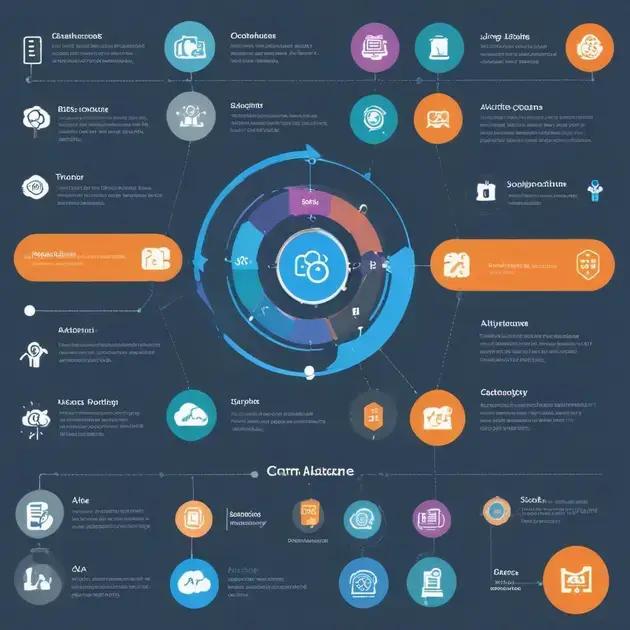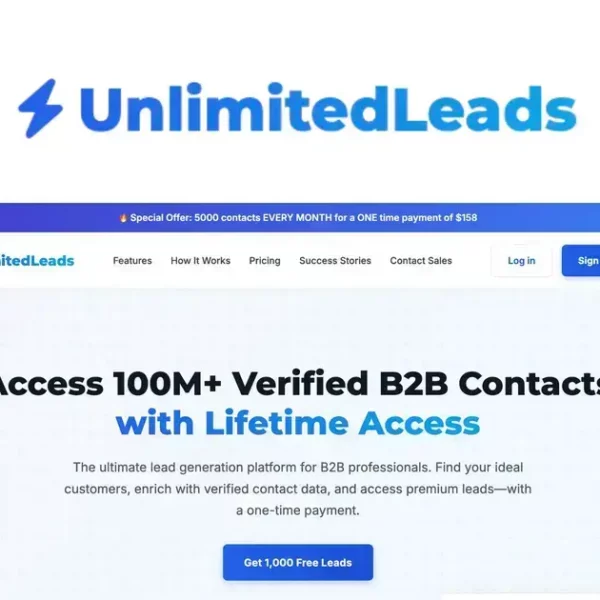Building your own CRM is highly beneficial, allowing for tailored features that meet specific business needs, improved efficiency, and better control over customer data. Key steps include defining objectives, focusing on user experience, and ensuring data quality while avoiding common pitfalls.
If you want to take control of your customer relationships, you might want to make your own CRM. Building a customized CRM can help you meet your specific business needs. In this article, we will explore the reasons you should consider making your own CRM, provide a step-by-step guide on how to create it, and discuss the key features that can enhance your customer interactions.
Why You Should Make Your Own CRM
Creating your own CRM system offers several advantages that can significantly enhance how you manage customer relationships. Instead of relying on generic solutions, a custom CRM can be tailored to your specific business needs.
Personalization
With a tailored CRM, you can include features that matter most to your business. This means creating layouts, fields, and workflows that align with your internal processes and optimize customer interactions. Personalization ensures that your team can work more efficiently and effectively.
Cost Savings
Using off-the-shelf solutions may involve subscription fees and additional costs for features you might not need. By making your own CRM, you can reduce these expenses and allocate resources towards other vital areas of your business. Additionally, your system can grow with you, ensuring that you only pay for what you require.
Data Control
Creating your own CRM gives you complete control over your data. You decide how information is collected, stored, and used. This enhances privacy and security, ensuring that sensitive customer data is managed according to your policies and compliance requirements.
Integration Flexibility
Building your CRM allows for seamless integration with other tools you use. Whether it’s email marketing platforms, e-commerce systems, or analytics tools, a custom CRM can be designed to connect with your existing technology stack, allowing for smoother data flow and improved workflows.
Scalability
As your business grows, your CRM needs will evolve. Having a custom CRM ensures it can be modified and scaled according to your changing business environment without the limitations that off-the-shelf solutions might have.
Step-by-Step Guide to Building Your CRM

Building your own CRM can seem like a daunting task, but following a step-by-step approach simplifies the process. Below is a guide to help you through the journey of creating your CRM.
Step 1: Define Your Requirements
Start by identifying the specific needs of your business. Consider what features will be crucial for your team. This may include contact management, sales tracking, reporting, or integration with other tools. Gathering input from your team is essential to ensure you create a system that meets everyone’s needs.
Step 2: Choose the Right Technology
The next step is selecting the technology stack for your CRM. You can choose to build it from scratch using programming languages like Python or JavaScript, or you may opt for low-code platforms that simplify development. Consider factors like scalability, budget, and your team’s technical skills.
Step 3: Design User Interfaces
User experience is vital for the success of your CRM. Create intuitive layouts and designs that elevate how users interact with the system. Use mockups and prototypes to visualize the interface before getting into coding. Test these designs with potential users to gather feedback.
Step 4: Develop Core Features
Focus on developing the essential features outlined in your requirements. Ensure functions like adding contacts, tracking interactions, and generating reports are fully operational. Pay attention to the functionality and ensure the features are user-friendly. Testing during this phase will help identify and resolve any issues.
Step 5: Implement Testing and Feedback
Before launching your CRM, conduct thorough testing to ensure everything works as planned. Invite users to test the system and provide feedback. Collect their insights to make necessary adjustments. Once testing is complete, train your team to ensure they are comfortable using the new CRM.
Best Tools for Creating Custom CRM
When it comes to making your own CRM, choosing the right tools is essential. There are various platforms and software to help you build a system that suits your unique needs.
1. Low-Code Development Platforms
Low-code platforms like OutSystems and Appian allow users to create applications without extensive coding knowledge. They provide pre-built templates and visual interfaces that simplify the development process, making it easier for businesses to build custom CRMs.
2. Open-Source CRM Software
If you prefer having complete control over your CRM, consider open-source solutions such as SuiteCRM or Odoo. These platforms provide flexibility, allowing you to customize the software to your specifications and integrate additional functionalities.
3. No-Code Tools
No-code tools like Airtable and Zapier facilitate the creation of custom CRM workflows without writing any code. With a user-friendly interface, you can easily set up databases, automate tasks, and connect different applications.
4. Spreadsheet Applications
For small businesses, simply using spreadsheet applications like Google Sheets or Microsoft Excel can be an excellent starting point. These tools can help manage customer data and track interactions in an organized manner before committing to a more complex CRM system.
5. Custom Development
For those with specific requirements, hiring a developer to create a bespoke CRM can be the best investment. This option ensures that your CRM aligns perfectly with your business processes and goals, giving you the flexibility to scale as needed.
Features to Include in Your CRM

When creating your own CRM, including the right features is crucial for maximizing its effectiveness. Here are some essential features to consider:
1. Contact Management
Contact management is a core feature of any CRM. It allows you to store and organize customer information including names, email addresses, phone numbers, and interaction history. An effective system will enable easy searching and filtering to access information quickly.
2. Sales Pipeline Tracking
A sales pipeline management feature helps you visualize and track the journey of your leads. This can include stages from lead generation to closing deals. By having a clear view of where each lead stands, your sales team can prioritize efforts and increase conversion rates.
3. Reporting and Analytics
Incorporating reporting and analytics tools allows you to analyze customer data and track key performance indicators (KPIs). Customizable reports can help you understand customer behavior, sales trends, and areas for improvement, guiding data-driven decision-making.
4. Automation Capabilities
Automation features streamline repetitive tasks such as sending follow-up emails or scheduling appointments. By automating these processes, your team can focus on more strategic tasks, improving overall productivity and efficiency.
5. Customizable Dashboards
Having customizable dashboards lets users personalize their view in the CRM according to their roles. This feature enhances user experience, allowing team members to quickly access relevant data and tools they need to perform their job effectively.
Common Mistakes to Avoid When Building CRM
Building your own CRM can be highly beneficial, but several common mistakes can derail the process. Here are some pitfalls to avoid:
1. Lack of Clear Objectives
Before starting the CRM development, define clear objectives. Without a specific purpose, teams can end up with a system that doesn’t meet their needs. Setting goals will guide the development process and ensure the CRM supports your business strategy.
2. Ignoring User Experience
User experience should be a priority. If the CRM is difficult to use, team members may resist adopting it. Make sure to design an intuitive interface and gather feedback from users throughout development to improve usability.
3. Overcomplicating Features
While it’s tempting to include many features, overloaded CRMs can become unwieldy. Focus on essential functions that provide value. Start simple and consider scalability for future enhancements based on user needs.
4. Failing to Integrate with Existing Systems
Ensure your CRM can integrate seamlessly with existing tools and software your team uses, such as email platforms, project management tools, and social media. Lack of integration can lead to data silos and disrupt workflows, making it harder for team members to access the information they need.
5. Neglecting Data Quality
Data quality is vital for the success of any CRM. If the data being fed into the system is inaccurate or outdated, it can lead to poor decision-making. Implement measures to maintain data integrity, such as regular cleaning and updates.
In Conclusion: Building Your Own CRM
Creating a custom CRM can greatly improve how you manage customer relationships. By avoiding common mistakes and focusing on essential features, you can ensure your system is efficient and user-friendly.
Remember to define clear goals, design with user experience in mind, and maintain data quality. Integrating your CRM with existing tools will help streamline workflows and enhance productivity.
Your CRM should grow with your business needs, allowing for flexibility and scalability. Embrace this opportunity to shape a system that truly serves your organization and boosts customer satisfaction.
FAQ – Frequently Asked Questions about Building Your Own CRM
What are the main benefits of building a custom CRM?
A custom CRM allows you to tailor features to fit your specific business needs, improve efficiency, and gain better control over customer data.
How can I ensure my CRM is user-friendly?
Focus on designing an intuitive interface, gather user feedback during development, and provide training for team members to enhance usability.
What features are essential for a good CRM system?
Key features include contact management, sales pipeline tracking, reporting and analytics, automation capabilities, and customizable dashboards.
How can I avoid mistakes when building my CRM?
Set clear objectives, prioritize user experience, avoid overcomplicating features, ensure proper integration with existing tools, and maintain data quality.
What tools can help me create my own CRM?
Consider using low-code platforms like OutSystems, open-source software like SuiteCRM, or no-code tools like Airtable, depending on your needs and technical abilities.
Is it important to integrate my CRM with other software?
Yes, integrating with existing software helps eliminate data silos and improves workflow efficiency, making it easier for team members to access necessary information.




